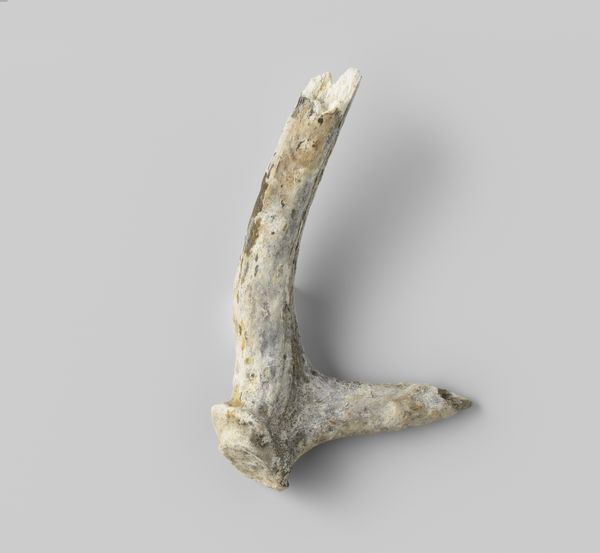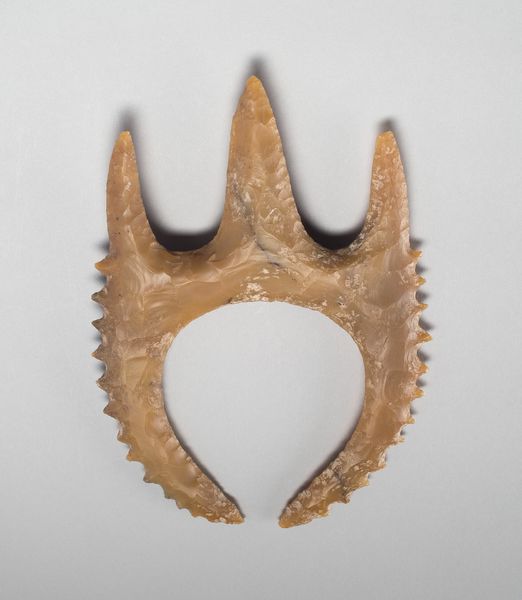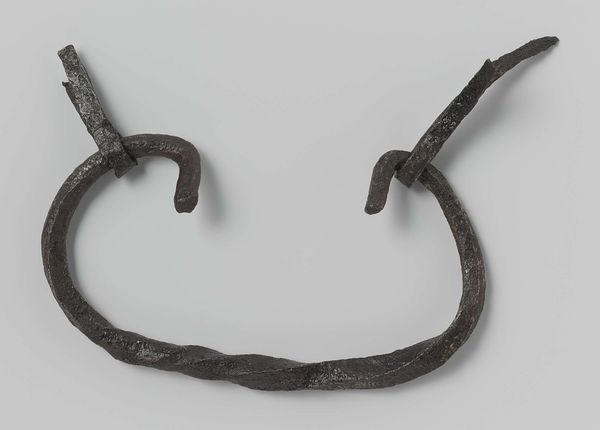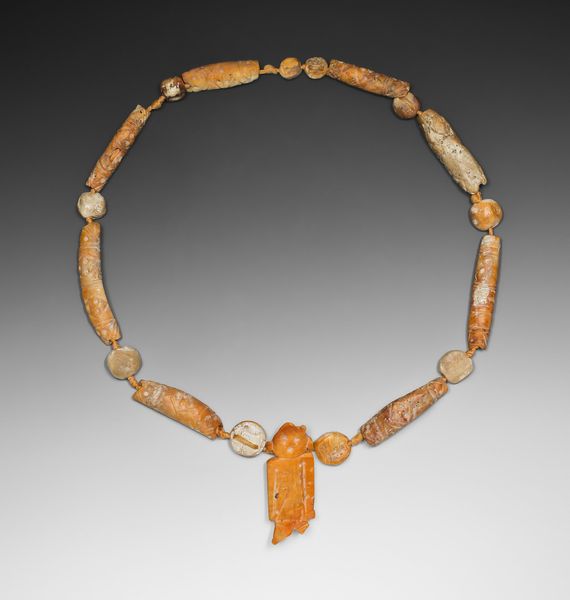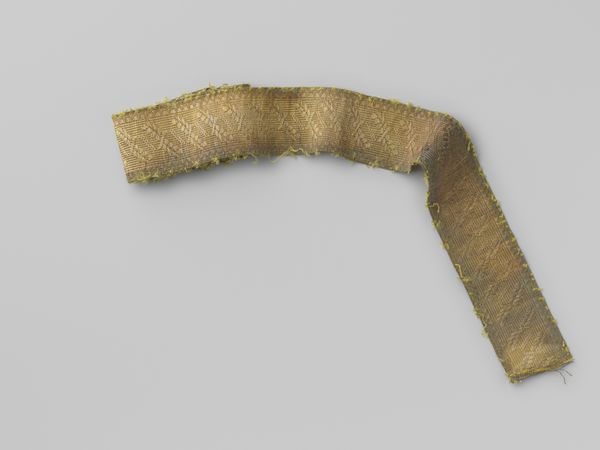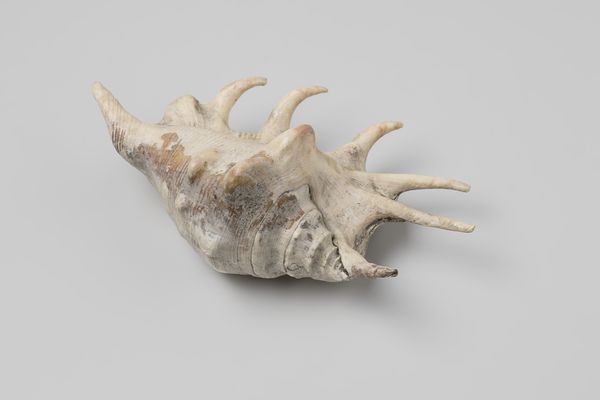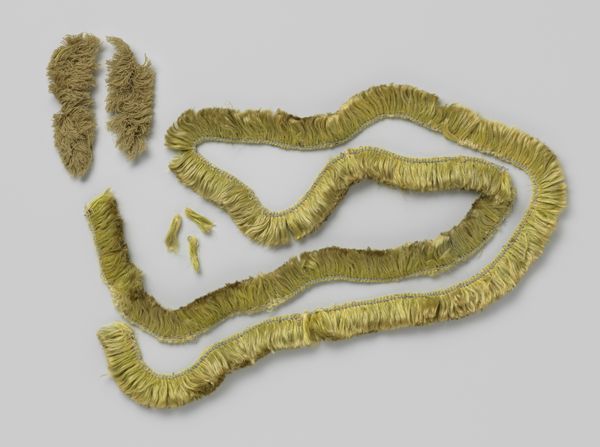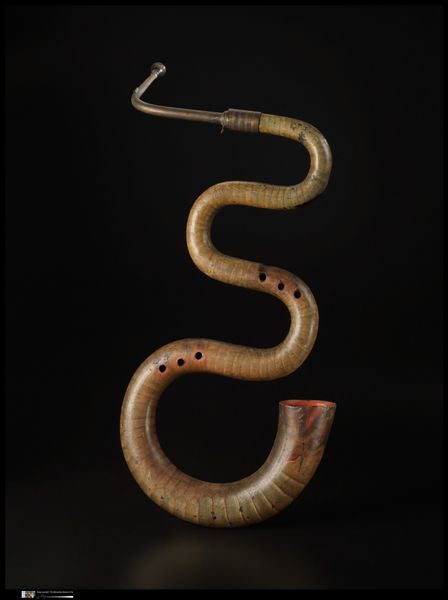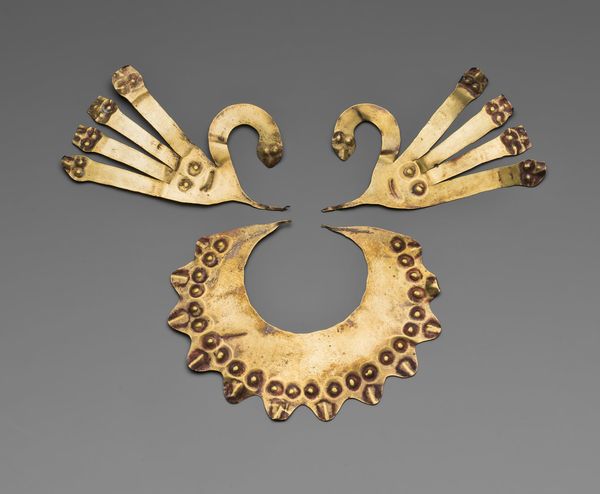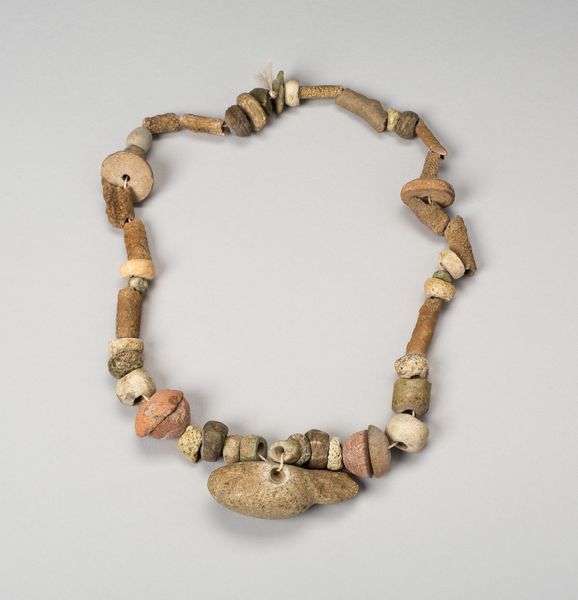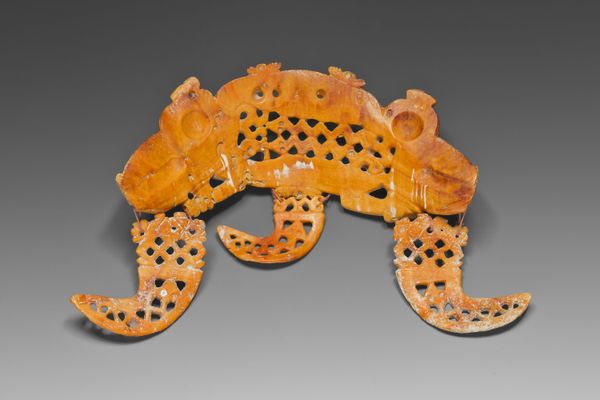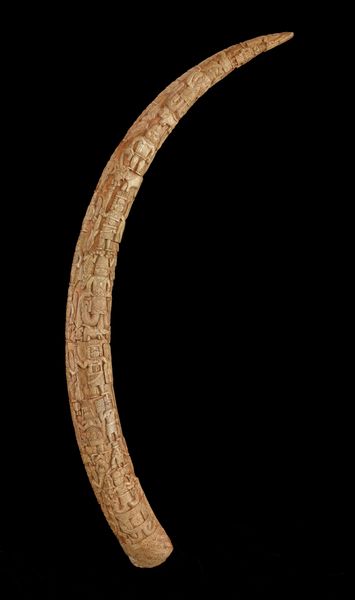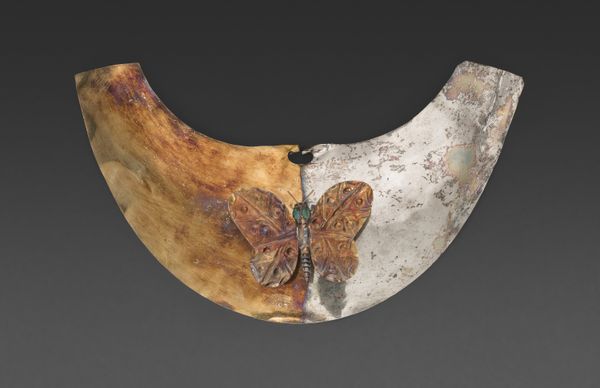
Necklace with a Pendant Depicting a Large Fish Eating a Smaller Fish c. 200
0:00
0:00
ceramic, terracotta
#
ceramic
#
figuration
#
terracotta
#
indigenous-americas
Dimensions: Necklace: l. 25.4 cm (10 in.); pendant: 9.5 × 14.6 cm (3 3/4 × 5 3/4 in.)
Copyright: Public Domain
Curator: The Art Institute of Chicago holds this compelling necklace from around 200 CE. It's a Colima piece depicting a large fish consuming a smaller one. Editor: Immediately, I’m struck by its tactile nature. You can almost feel the smooth worn texture of the material. There is something inherently unsettling but also intriguing about it. Curator: Absolutely. Colima art frequently explored themes of transformation and power dynamics. The image of a large fish devouring a smaller one could represent societal hierarchies or even spiritual beliefs about life cycles, life, death, and rebirth. Consider the potential symbolic weight attached to adornment in these cultures. Editor: Given its composition, it would be intriguing to examine the source and the working of the materials—perhaps some kind of shell or even wood—as a statement about the Colima community’s connection with the water or with more earthly matter. Did the craftsman shape the pendant only with primitive tools? What about the necklace beads? These choices inevitably influence the artwork's significance. Curator: Precisely. The carving could signify specific techniques used within their community. Its production methods highlight the social and cultural aspects of Colima life. Perhaps gendered craftmanship norms are implicated. We also must consider whether those who would have worn it—as with most other art objects—may have experienced significantly different interpretations. Editor: Yes, considering the access to these kinds of precious raw materials, as well as their processing in a society that, according to scholars, lacked complex metal tools—it's interesting to consider production through collective efforts. Curator: Indeed. Thinking about the historical implications, the "big fish eats little fish" trope is hardly unique to Colima culture, which also invites analysis through a postcolonial lens, prompting reflection on cultural imperialism throughout time. Editor: By situating this piece within a network of labor and material history, the necklace pushes beyond the aesthetic into discussions of materiality and cultural value, don't you think? Curator: I completely agree. Hopefully this small fish is at least rich in these concepts now! Editor: It surely is!
Comments
No comments
Be the first to comment and join the conversation on the ultimate creative platform.
